Advertisement
'I Was Able To Do It': How Nick Silver Kept Running As He Lost His Eyesight
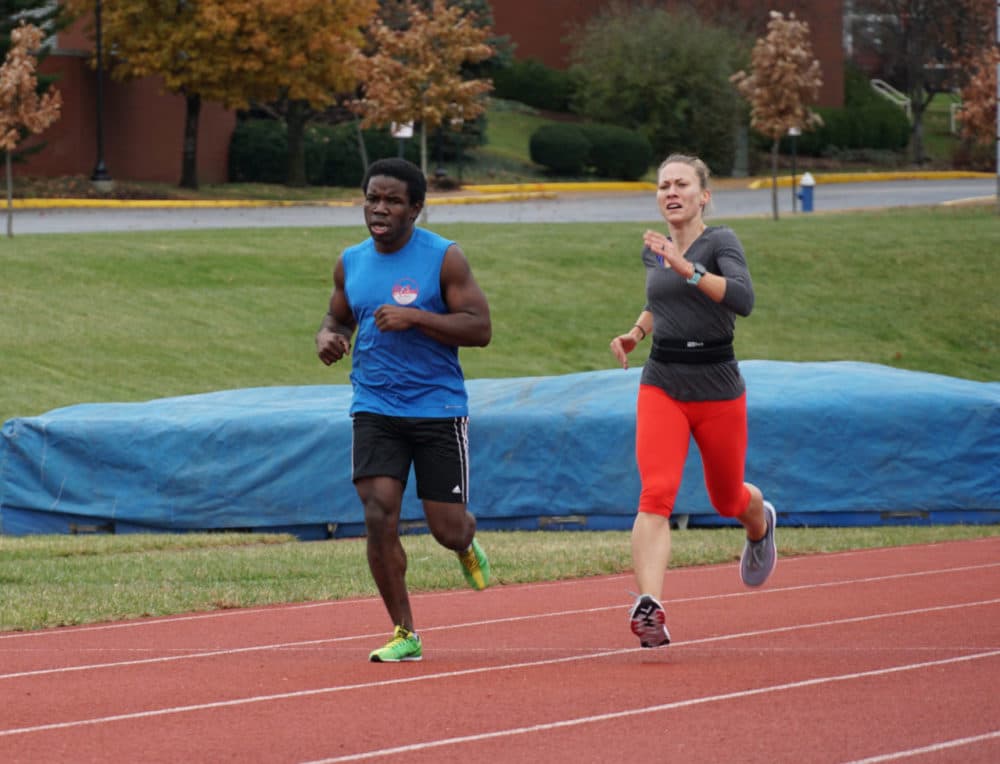
Nick Silver lives in St. Louis. He’s a 34-year-old small business owner with six kids. When he was young, he started losing his eyesight. He wasn’t allowed to play contact sports like soccer and basketball. Adults told him it was just too dangerous. Silver got teased — a lot.
"In today's world, it's considered bullying," Silver says. "I didn't consider it bullying then. I wasn't put into a trash can. I wasn't stuffed in a locker. It was just the lack of understanding."
The one thing Silver could always do was run. And he was pretty good at it.
"You know, you always want to be somebody or something — have something that you can hang your hat on," Silver says.
But until last year, he wasn’t sure he’d be able to keep running.
'What Can We Do?'
When Nick Silver was born in 1985, he seemed completely healthy. Then, when he was about 4 years old, he started having trouble seeing. Silver had something called juvenile onset cataracts. His doctors removed them, but then Silver developed a form of glaucoma.
"It was this trial and error through the first years of life, really," Silver says. "Spent a considerable amount of time in the hospital during kindergarten and first grade. And, really, when I came back to school, you know, I wore glasses — and I was the kid that had Coke bottles — and the glasses kept getting thicker as I got older."
The kids in Silver's class called him "Steve Urkel" and "four eyes." He says sometimes he’d take off his glasses to try to blend in. The problem was, he couldn’t really see without them.
“When you’re out there and the people around you are so scared for your safety, it kind of weighs you down.”
Nick Silver
His doctors said he could have a corneal transplant when he got older — an operation that would fix his eyesight.
"Enough to where I could drive," Silver says. "I even had a car sitting in my backyard that was mine once I learned how to drive, because doctors always said I’d be able to drive.
"It was a 1995 red Neon," he says. "I would go to the back room and look out the window and see it sitting there. I knew I had a couple of years before I could start learning to drive and, you know, that magical moment would come when I would get my new eyes, and I would be able to see."
Then, when Silver was in fourth grade, his doctors gave him some bad news: he had too much scar tissue on his eyes to be able to do the corneal transplant. There wasn’t going to be a magic surgery. And he wasn’t going to be able to drive that red car in the backyard.
He says he was in denial until he was about 15, when local TV news did a segment on the Missouri School for the Blind.
Advertisement
The Missouri School For The Blind
"I knew it was coming on," Silver says. "They kind of teased it that morning. I came from school and ran to the TV — and might have even set an alarm. I sat down. And the weather came on and I was like, ‘Come on! Come on!’ And so it finally came on, and I just was, like, starstruck."
The way Silver remembers it, the story was pretty simple — just a couple kids walking around the school and talking about what it was like. But it made a big impression on him.
"And I was like, ‘I need to go there. I want to go there now,’ " Silver remembers. "This was a complete flip of the coin. Because before then, I was like, ‘I don't want to go to that school. That school’s gonna make me walk with a cane. It's gonna make me walk around with a dog. And I got to learn braille.’ "
Silver got his dad to sign the paperwork and transferred to the School for the Blind.
"I was a rock star," he says. "That's what I was. I was the new kid. Everyone was like, ‘Hey, there goes that new kid. Who's that? Is he from St. Louis?’ The school only had about 330 kids in it. So everybody knew everybody."
But the best thing was being able to play sports — for the first time, really.
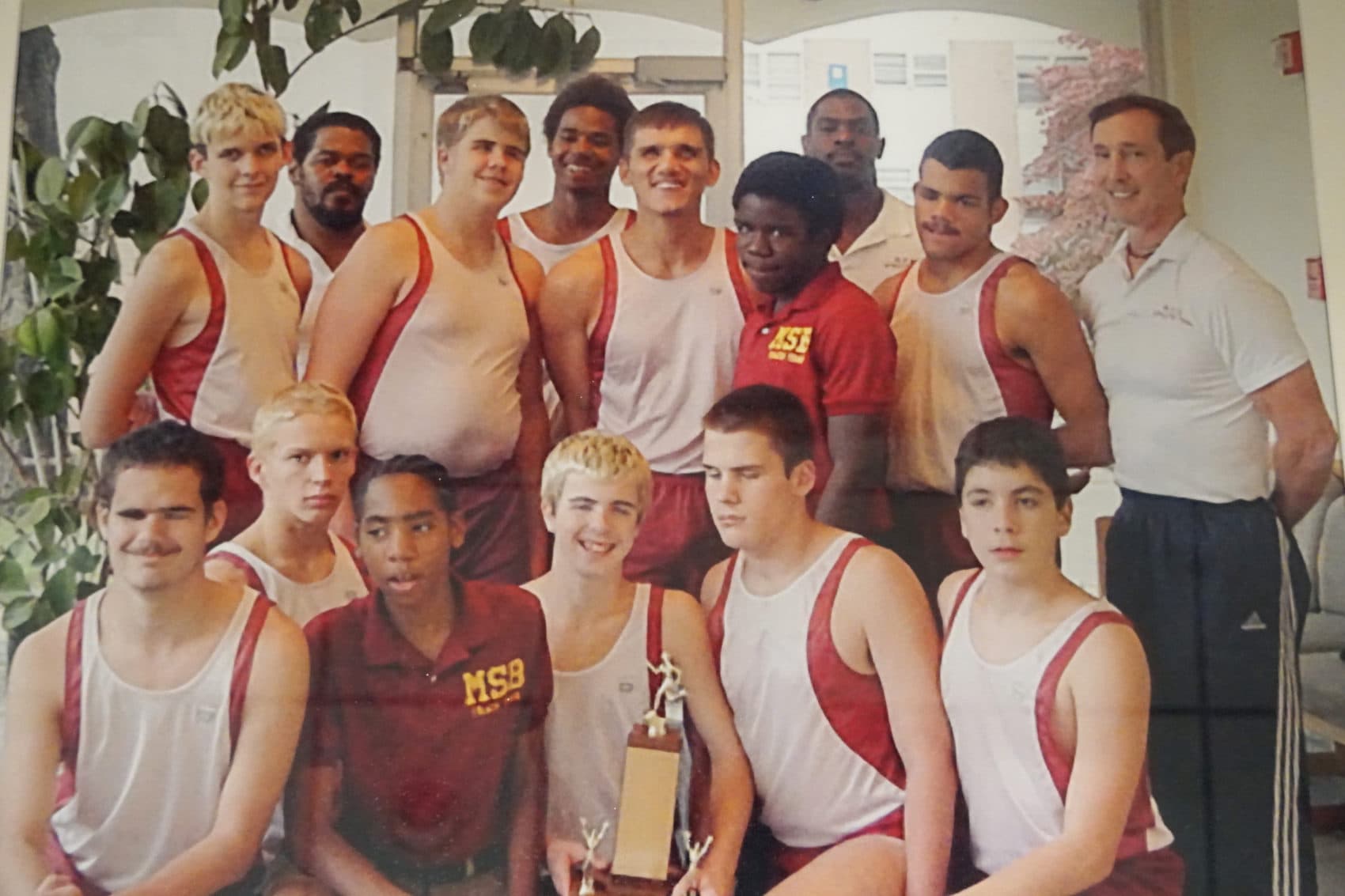
The school’s gym teacher and coach was named John Schrock.
"Schrock, as we called him," Silver says. "He was quirky. He was just real down to earth. And he was really cool. He drove a motorcycle. He competed in the Senior Olympics when I was in school — and even during our track season, you’d see him out there after school. It was funny because he would go and practice javelin, but he wouldn’t use a javelin — he would use old white canes."
Silver says Schrock didn’t think being blind meant you had to sit out.
"From day one he just encouraged me, ‘Let’s see what you can do.’ You know, ‘You don’t have to be the best. Just let me see what you can do and we’ll work on it from there,’ " Silver remembers.
So Silver joined the track team. And the wrestling team. And the swim team.
"I was able to do it," Silver says. "There wasn’t anyone saying, ‘Be careful.’ There wasn’t anyone screaming for their life. When you’re out there and the people around you are so scared for your safety, it kind of weighs you down. You run a little slower because you don’t want to injure yourself and make them have a heart attack."
Hard Times
Silver's support network, his teammates, the sheer joy of competing — all that helped build him up and got him through some really tough years. He was living with his dad, and he says he got into the habit of waking up every day around 3 or 4 a.m.
"That’s the time that my dad would walk around my house," Silver says. "And if he was going to go crazy or flip his lid, that’s when it was going to happen. I wanted to make sure that I was coherent enough to defend myself."
This meant that when Silver graduated in 2005, he didn’t have anywhere to go. A school employee broke the rules and gave him a master key that unlocked the dorms. He found an empty room. It was comfortable — it had a bed and a TV — and he could walk to the grocery store. Silver stayed there about three months — until one day, he had to leave in a hurry.
"I knew I got caught," Silver says. "The janitor came up there and she’s like, ‘I’m reporting you.’ Everything I could grab, I grabbed it all, put it into my suitcase. And I took off as fast as I could down the street."
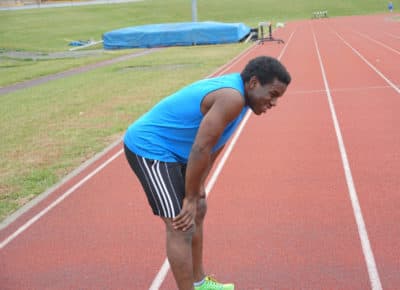
But he snuck back in. For a couple weeks, he slept in one of the big bins in the high school gym — the ones that hold the basketballs and the wrestling mats. As if being homeless wasn’t enough, his sight was getting worse and worse.
At one point, he says he thought seriously about taking his own life. But a friend in Arizona convinced him to come and live with her. And once there, he started running again.
"Sports, even in Arizona, still was a refuge, still a way for me to get out and run — run the dirt roads and get blasted by sand and dirt," Silver says.
Silver tried to qualify for the Paralympics in 2008, but he got injured and he didn’t make it.
"That got me real down," Silver says.
Returning To Running
Silver moved back to St. Louis and took a break from sports for a while. After a couple years, he thought about getting back into running. But by this time, his sight had deteriorated to the point that it wasn’t really safe for him to run alone.
Years earlier, Silver had been looking for a running guide in St. Louis. He posted on a website called United in Stride. But there weren’t many registered runners in his area, and he never actually connected with any guides.
Until last year, when another athlete named Pierre Politte stumbled across Silver’s old online profile.
"So late night I stumbled on a website called United in Stride, and I saw a profile of Quicksilver," Politte remembers.
Quicksilver is the handle that Nick Silver uses online. The pace Silver had listed was a little fast for Politte's taste — a 6:30 mile — but Politte thought, why not? So he sent Silver a message.
"I think it was the next morning that he reached out and said, ‘Yes, I'd be interested in running — when can you go?’ " Politte says. "And my first reaction is, ‘Wow, this is happening quickly.’ But I work from home, so I said I can go just about any time."
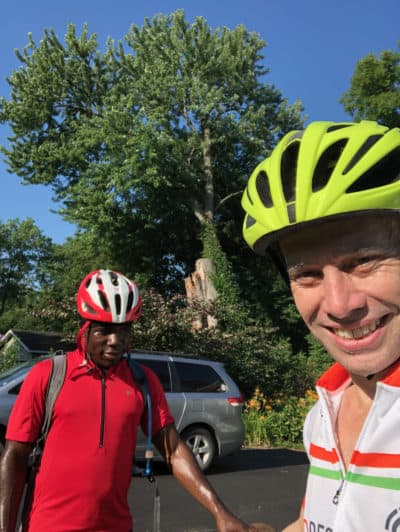
Politte had never guided a blind runner before, and he says he felt pretty nervous.
"There's no guide on how to guide, and you don’t know what you’re supposed to be doing," Politte says.
But he did find one helpful piece of advice:
"That said, ‘Don't tell them what they can't do,’ " Politte says. "So with that in mind, we got together. And I asked Nick, ‘What is it you want me to point out? What do you not want me to point out?’ And he said, ‘Just describe what you see.’ Which sounds really, really simple. It's not. Describing how sharp a turn is or an S-turn or if there's tree branches at a certain height creeping into the trail is actually surprisingly difficult."
One of the first times they went running together, Silver told Politte that the most important thing for him to remember was that he wasn’t responsible for any accidents.
"And he emphasized that, ‘If ever I run into anything,’ he said, ‘it's not my guide's fault. I'm taking this risk. You do your best to describe,’ " Politte remembers. " ‘Just take me to hospital and drop me off’ was, I think, his approach to it."
They went for a couple runs with no accidents … so Politte says they decided to up the ante a little.
Silver's Helping Hands
"It was probably our second or third meeting when we met up to go biking," Politte says. "And I put a bunch of zip ties into my spokes — like the baseball card that we all had as kids poking into our spokes to make a whole bunch of noise. You get a ‘BrrrrrrRRRRRrrrrrr’ as you speed up and slow down, which is important because he can hear how fast I’m going.
"And I remember one time, he pulled up alongside me on the levee trail. And I said, ‘We're wide open.’ And he took off. And he was way ahead of me. And I am relatively fast, I think, but I was pumping hard to catch up to him. And I finally catch up to him. And I'm alongside him, and I'm like, ‘Wow, what got into you? I could barely catch you.’ And he said ‘Oh, I thought you were in front of me.’ And I'm like, ‘Oh, my gosh. I'm going to kill this guy and be completely responsible for that happening.’ "
"I’m sure I scare him," Silver says. "I scare the bejesus out of him, but he doesn’t stop me. He doesn’t say I can’t do it. He won’t tell me I can’t."
Nick Silver and Pierre Politte have been running and biking together for about a year. And Politte says, just like with any other relationship, they’ve gotten more comfortable with each other.
"Nick has a sense of humor that comes through and makes things a whole lot easier," Politte says. "So very quickly, you go from being a guide to being a friend. And where that line is, I don't know anymore."
When Silver's sewer backed up, Politte came over to help. And that’s not the only time he’s stopped by.
"He got three puppies — which I still think he's crazy for having. He needed the back fence shored up or repaired, and so I helped him with that," Politte says.
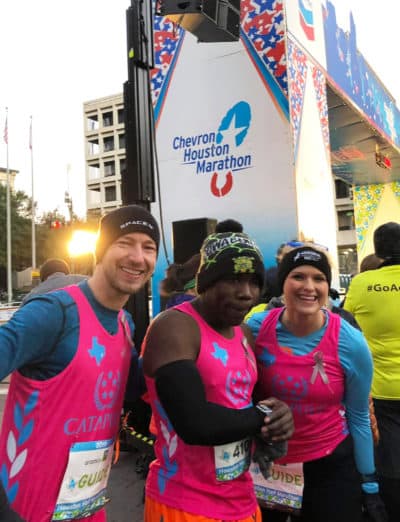
"He’s become almost like a father figure," Silver says. "I turn to him like I would a parent sometimes."
Silver ran his first half marathon in Houston in January. Right now, Politte and several other guides are helping Silver train for at least eight more races this year.
"I don’t know what I can do to show my appreciation, but in lot of ways, the only way I think I can show my appreciation is by doing my very best at each and every race I go to and giving it all," Silver says. "And letting him know that what you guys have done for me has helped me get to this point."
Silver says he’s not just thinking about himself anymore. He’s trying to build up a community of guides in St. Louis so more people with disabilities can run. And he’s reached out to race directors around the city, asking them to add divisions for athletes with disabilities.
"Every race I run, there’s somebody comes up to me and says, ‘Hey, I saw you out there killing it. You guys are doing so good,’ " Silver says. "The goal is to bring people with disabilities into the limelight and say, ‘You can do this. You just gotta try.’ "
This segment aired on May 4, 2019.